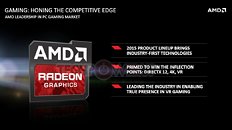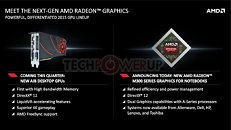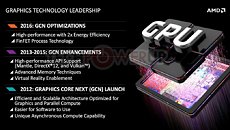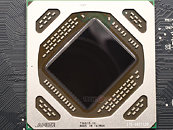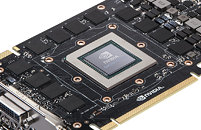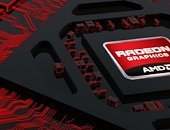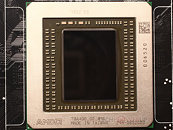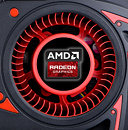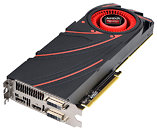
AMD Readies 14 nm FinFET GPUs in 2016
At its ongoing Investor Day presentation, AMD announced that will continue to make GPUs for every segment of the market. The company is planning to leverage improvements to its Graphics CoreNext architecture for the foreseeable future, but is betting on a huge performance/Watt increase with its 2016 GPUs. The secret sauce here will be the shift to 14 nm FinFET process. It's important to note here, that AMD refrained from mentioning "14 nm," but the mention of FinFET is a reliable giveaway. AMD is expecting a 2x (100%) gain in performance/Watt over its current generation of GPUs, with the shift.
AMD's future GPUs will focus on several market inflection points, such as the arrival of CPU-efficient graphics APIs such as DirectX 12 and Vulkan, Windows 10 pulling users from Windows 7, 4K Ultra HD displays getting more affordable (perhaps even mainstream), which it believes will help it sell enough GPUs to return to profitability. The company also announced an unnamed major design win, which will take shape in this quarter, and which will hit the markets in 2016.
AMD's future GPUs will focus on several market inflection points, such as the arrival of CPU-efficient graphics APIs such as DirectX 12 and Vulkan, Windows 10 pulling users from Windows 7, 4K Ultra HD displays getting more affordable (perhaps even mainstream), which it believes will help it sell enough GPUs to return to profitability. The company also announced an unnamed major design win, which will take shape in this quarter, and which will hit the markets in 2016.
